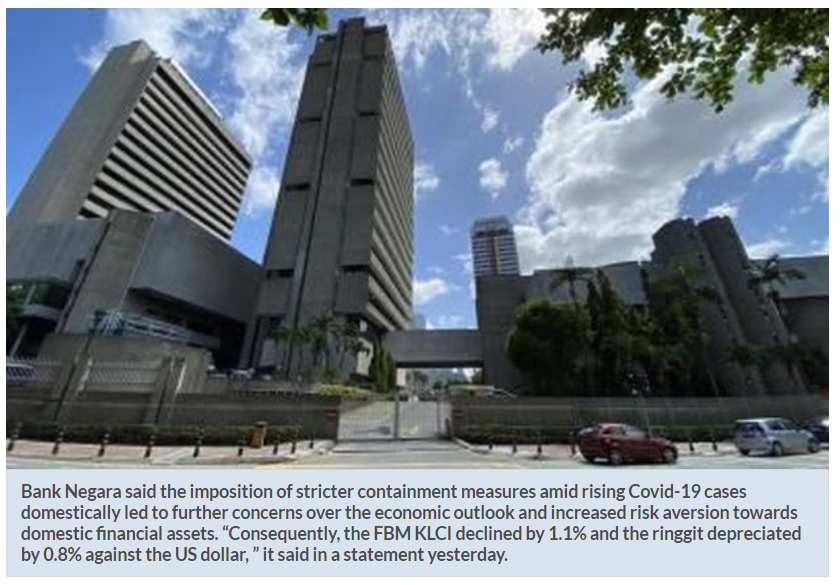Malaysia: Local financial markets affected by domestic, external factors
KUALA LUMPUR: The domestic financial markets were affected by both domestic and external factors in May, while investor sentiment was affected by the uncertainty surrounding the course of the pandemic in the region, Bank Negara said.
It said the imposition of stricter containment measures amid rising Covid-19 cases domestically led to further concerns over the economic outlook and increased risk aversion towards domestic financial assets.
“Consequently, the FBM KLCI declined by 1.1% and the ringgit depreciated by 0.8% against the US dollar, ” it said in a statement yesterday.
The 10-year Malaysian Government Securities’ yield increased by nine basis points, driven by expectations of increased domestic fiscal stimulus to support economic activity, it said.
In addition, “signs of higher inflation and forthcoming discussions by the US Federal Reserve to taper asset purchases led to bouts of increases in long-term US Treasury yields, which spilled over to yields in emerging market economies, including Malaysia”.
Banks have remained well-capitalised to withstand potential stress and sustain credit intermediation in the economy.
“Despite a marginal decline in capital ratios, banks’ excess capital buffers remained strong at RM119.9bil as at May 2021.
“Asset quality in the banking system remained intact and banks continued to facilitate repayment assistance to viable borrowers facing temporary financial difficulties.”
Bank Negara said that overall, gross and net impaired loans ratios remained broadly stable at 1.6% and 1%, respectively.
“Total provisions set aside against potential credit losses stood at 1.8% of total banking system loans, ” it said.
On financing growth, the central bank said May’s net financing growth was broadly sustained at 4.8% versus 4.9% in April.
This reflected the stable outstanding loan growth amid moderation in outstanding corporate bond growth of 7.2% in May, compared to 7.7% in April.
“Outstanding household loan growth was 6.1% compared to 6.2% in April.
“However, both loan disbursements and repayments declined across most purposes, partly reflecting the implementation of the Movement Control Order 3.0.
“For businesses, outstanding loan growth was sustained at 0.4% since April amid subdued working capital loan growth, ” it added. — Bernama


 Thailand
Thailand




